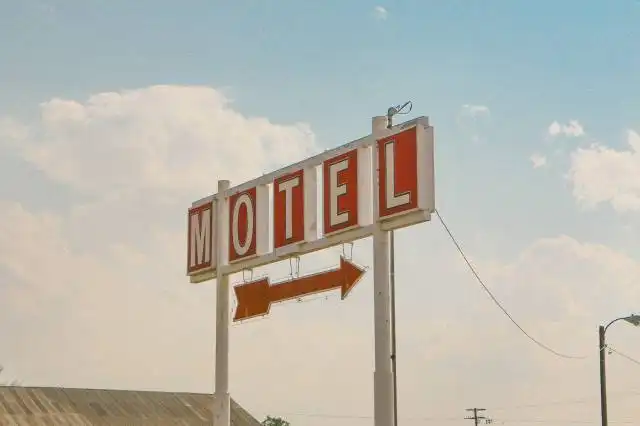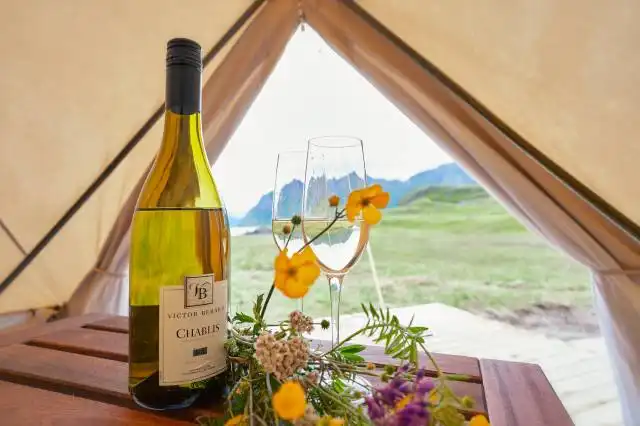Start a Miniature Golf Course
Teeing Off Profits: Visualize Your Mini-Golf Empire
| Updated


MINIATURE GOLF COURSE
Think teeing off profits with your very own Miniature Golf Course! This business is all about combining leisure with earning. Besides, who doesn't enjoy a round of mini-golf? You're investing in an enterprise that offers a miniature wonderland of fun and friendly competition for families, dates, and party-goers alike. This type of business involves creating and operating a compact golf course where customers get to enjoy a simplified, animated version of the traditional game.
Jump to Business Plan
RELATED BUSINESS IDEAS
Browse ALL Hospitality & Leisure Ventures Business Ideas
Discover Your Perfect Domain
Unlock the door to your online success with our hand-picked selection of premium domain names. Whether you're starting a new venture or rebranding an existing one, the right domain can set the tone for your digital presence. Browse through our curated list, each with its unique potential to enhance your brand's visibility and credibility.
MINIATURE GOLF COURSE MINI BUSINESS PLAN
This a quick reality check to help you identify the strengths and weaknesses of your business concept before you dive in.
Business Idea: Miniature Golf Course
Expected Percent Margin:
- Gross Margin: 70-80%
- Net Profit Margin: 10-15%
Earnings Expectations:
- Daily Earnings: $500 - $1,000
- Weekly Earnings: $3,500 - $7,000
- Monthly Earnings: $15,000 - $30,000
- Annual Earnings: $180,000 - $360,000
Actions to Hit Those Numbers:
Initial Investment and Maintenance:
- Initial Investment: Typically between $250,000 - $500,000 for buying land, construction, and licenses.
- Maintenance Expenses: Budget around $500 - $1,000 per month for maintaining the landscape and equipment.
Marketing and Customer Acquisition:
- Web Presence: Invest in a basic website and Google My Business Listing for local SEO.
- Local Marketing: Run local ads to attract families, teenagers, and event organizers.
Pricing and Revenue Channels:
- Pricing: Aim for an average price of $10 per game.
- Private Event Bookings: Offer party packages, corporate events, and tournaments.
Cost Control:
- Seasonality: Understand that this business can be seasonal depending on your location, budget for off-peak months.
Business Operations:
- Hours of Operation: Open long hours during spring and summer months, consider limited hours during off-peak.
- Staffing: Hire part-time staff during peak seasons to assist with operations.
Again, these are general estimations and can vary greatly depending on location, size of your mini-golf course, number of holes, and other individual business strategies. Please consult with a professional advisor before making any decision.
NOT WHAT YOU HAD IN MIND? Here are more ideas



Browse ALL Hospitality & Leisure Ventures Business Ideas
Grab Your Business Website Name
Before you get caught up in the whirlwind of setting up your business, invest in a domain name. It's a small but significant step that lays the foundation for your brand and makes it easier for customers to find and trust you. Just like you wouldn't build a house without securing the land first, don't build a business without securing your domain name.
"Why? Can't that wait?" Here's why it shouldn't
Step 1: Determining if the Business is Right Endeavor
Breakdown of Startup Expenses
Before starting a miniature golf course, it is important to understand the startup expenses associated with the business. These expenses can include the cost of land, construction, equipment, and other materials. It is important to research the cost of each of these items in the area where the business will be located. Additionally, it is important to consider the cost of permits and licenses that may be required to operate the business. It is also important to consider the cost of hiring employees, if necessary. All of these expenses should be taken into account before making the decision to start a miniature golf course.
Breakdown of Ongoing Expenses
After the startup expenses have been considered, it is important to understand the ongoing expenses associated with running a miniature golf course. These expenses can include the cost of maintenance and repairs, utilities, insurance, and other costs associated with running the business. Additionally, it is important to consider the cost of marketing and advertising, as well as the cost of providing customer service. All of these expenses should be taken into account before making the decision to start a miniature golf course.
Examples on Ways to Make Money
Once the startup and ongoing expenses have been considered, it is important to understand the various ways to make money with a miniature golf course. These can include charging admission fees, selling food and beverages, and offering other services such as lessons and tournaments. Additionally, it is important to consider other ways to monetize the business, such as offering sponsorships or partnering with local businesses. All of these options should be taken into account before making the decision to start a miniature golf course.
Step 2: Naming the Business
When it comes to naming a business, it is important to pick something that is memorable and reflects the type of business you are running. It is also important to make sure that the name is not already taken by another business. When coming up with a name for a miniature golf course, it is important to consider the location, the type of golf course, and the target audience. For example, if the miniature golf course is located near a beach, a name like “Beachside Putt Putt” could be a good fit. If the golf course is more family-oriented, a name like “Family Fun Putt Putt” could be a good choice. It is also important to consider the domain name availability when selecting a name. Once a name is chosen, it is important to register the business name with the state and secure the domain name. Additionally, it is important to make sure that the name is trademarked to protect it from being used by another business.
Step 3: Obtaining Necessary Licenses and Permits
Once you have determined that a miniature golf course is a viable business venture and have named your business, the next step is to obtain the necessary licenses and permits. Depending on your location, the type of business, and the services you plan to offer, you may need to obtain a business license, a liquor license, a food service license, and other permits. You should contact your local government offices to determine which licenses and permits you need. Additionally, you may need to obtain zoning permits to ensure that your business is in compliance with local regulations. You may also need to obtain a special permit to operate a miniature golf course in your area.
You should also research any federal, state, or local regulations that may apply to your business. This includes regulations related to health and safety, as well as any environmental regulations that may apply. You should also be aware of any regulations related to the sale of alcoholic beverages, if you plan to offer them. Finally, you should also research any regulations related to the use of any hazardous materials or chemicals that may be used in the course.
Step 4: Finding a Suitable Location
Finding the right location for a miniature golf course is essential for success. A good location should be easy to find and have plenty of parking. It should also be in an area with a high concentration of potential customers, such as a busy shopping center or a family-friendly neighborhood. Additionally, it should be in an area that is zoned for a miniature golf course. When researching potential locations, it is important to consider the size of the property, the cost of renting or purchasing the land, and any local laws or regulations that may apply.
It is also important to consider the layout of the property. The course should be designed to maximize the use of the available space. This includes considering the size of the holes, the placement of obstacles, and the overall flow of the course. Additionally, the course should be designed to be visually appealing and inviting to potential customers.
Finally, it is important to consider the amenities that can be offered on the property. This includes seating areas, restrooms, and food and beverage services. These amenities can help to attract customers and increase revenue. Additionally, they can help to create a more enjoyable experience for customers.
Step 5: Designing the Course
Designing the course is one of the most important steps in starting a miniature golf course. It is important to consider the size of the course, the type of obstacles, and the overall layout. It is also important to consider the age range of the players and the difficulty of the course.
When designing the course, it is important to consider the size of the course. The size of the course should be determined by the amount of space available and the number of players that will be playing. It is important to make sure that the course is not too large or too small.
The type of obstacles should also be considered when designing the course. Obstacles can include water hazards, sand traps, and other obstacles that will add to the difficulty of the course. It is important to make sure that the obstacles are not too difficult or too easy.
The overall layout of the course should also be considered when designing the course. The layout should be designed in a way that is easy to navigate and that allows players to move from one hole to the next quickly and easily.
Finally, it is important to consider the age range of the players and the difficulty of the course. The course should be designed in a way that is appropriate for the age range of the players and that provides a challenge that is not too difficult or too easy. This will ensure that the players have a fun and enjoyable experience.
Step 6: Purchasing Equipment
When it comes to purchasing equipment for a miniature golf course, there are a few key pieces of equipment that are essential. The most important piece of equipment is the golf course itself. This includes the putting green, the obstacles, and the flags. Additionally, it is important to purchase golf clubs, golf balls, scorecards, and pencils. It is also important to purchase any other necessary items such as a cash register, a computer, and a printer. All of these items should be purchased from a reputable supplier and should be of the highest quality. It is important to remember that the quality of the equipment will directly impact the quality of the experience for the customers. Additionally, it is important to consider the cost of the equipment when making a purchase. It is important to make sure that the cost of the equipment is within the budget of the business.
Step 7: Hiring Staff
When it comes to hiring staff for a miniature golf course, it is important to find individuals who are knowledgeable about the game and have experience working in customer service. It is important to find individuals who are friendly, outgoing, and have a good attitude. Additionally, it is important to find individuals who are reliable and trustworthy. It is important to make sure that the staff is properly trained in customer service, safety, and the rules of the game. It is also important to make sure that the staff is properly trained in the use of the equipment and the maintenance of the course. Additionally, it is important to make sure that the staff is properly compensated for their work.
Step 7: Advertising and Promoting the Business
Advertising and promoting the business is essential to the success of any venture. It is important to create a marketing plan that will reach the target audience and generate interest in the business. This can include traditional methods such as print and radio ads, as well as digital marketing such as social media and email campaigns. Additionally, it is important to consider promotional activities such as discounts and special events to draw in customers. For example, offering a free game of miniature golf for first-time customers or a discounted rate for large groups can be a great way to attract new customers. Additionally, creating a loyalty program or offering discounts for repeat customers can help to keep customers coming back. Finally, it is important to consider partnering with local businesses to cross-promote and reach a larger audience.
Step 8: Hiring Employees
Hiring employees is an important step in starting a miniature golf course. Depending on the size of the course, it may be necessary to hire a few people to help with the day-to-day operations. When hiring employees, it is important to consider their experience and qualifications, as well as their ability to work well with customers. Additionally, it is important to consider the cost of hiring and training employees. It is also important to ensure that all employees are properly trained in safety protocols and customer service. Furthermore, it is important to ensure that all employees are aware of the rules and regulations of the course. Finally, it is important to provide employees with the necessary tools and resources to do their job effectively.
Step 9: Opening Day
Opening day is the culmination of all the hard work that has gone into starting a miniature golf course. On opening day, the course should be ready for customers and all the staff should be trained and ready to go. It is important to have a grand opening event to draw in customers and to create a buzz about the new course. This can include special discounts, giveaways, and other promotions. It is also important to have a good marketing plan in place to make sure the course is well-known and that customers know where to find it. Additionally, it is important to have a good customer service plan in place to ensure that customers have a great experience and want to come back. Finally, it is important to have a plan in place for dealing with any issues that may arise on opening day. This could include having a plan for dealing with customer complaints, refunds, and other issues that may arise.
EXPLORE MORE CATEGORIES
Browse ALL Business Idea Categories
TAKE THE NEXT STEPS









